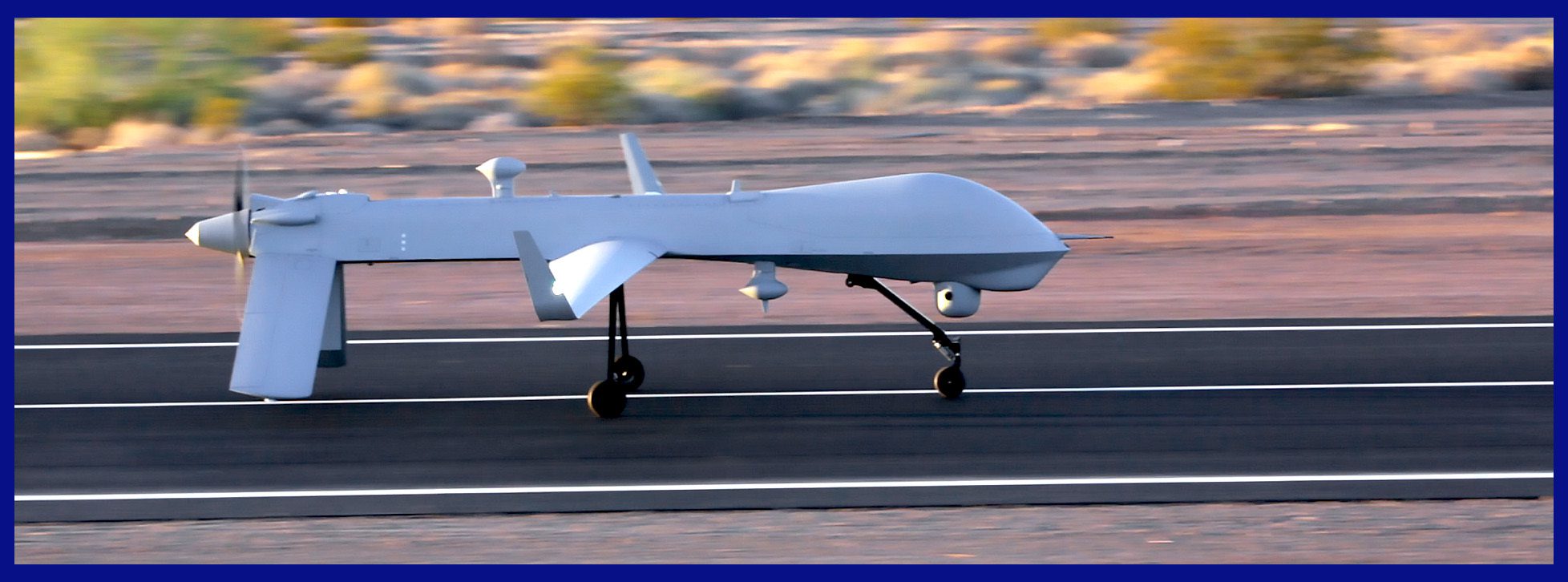Equipped with advanced sensors, cameras, and cutting-edge communication systems, the General Atomics MQ-1 Predator stands as a remotely piloted aircraft (RPA) meticulously crafted by GA-ASI. This innovation represents a groundbreaking unmanned aerial vehicle (UAV) that has significantly transformed modern warfare and surveillance capabilities. This adaptable aircraft has assumed a pivotal role in military operations since its inception, characterized by its sleek design and state-of-the-art technology, rendering it a formidable asset for intelligence, reconnaissance, and combat missions.
As per the United States Air Force (USAF) statement, the Predator is categorized as a ‘Tier II’ MALE UAS (medium-altitude, long-endurance unmanned aircraft system), marking a fundamental shift in the paradigm of UAVs and ensuring its continued utilization for decades through successive iterations.
From 2001 until the arrival of the MQ-9 Reaper, the General Atomics MQ-1 Predator served as the main remotely piloted aircraft utilized for offensive operations by the USAF and CIA in Afghanistan and the tribal regions of Pakistan. Although offensive uses of the Predator are classified by the U.S. military. In 2018, the Predator was phased out and replaced by the Reaper by the US Air Force.
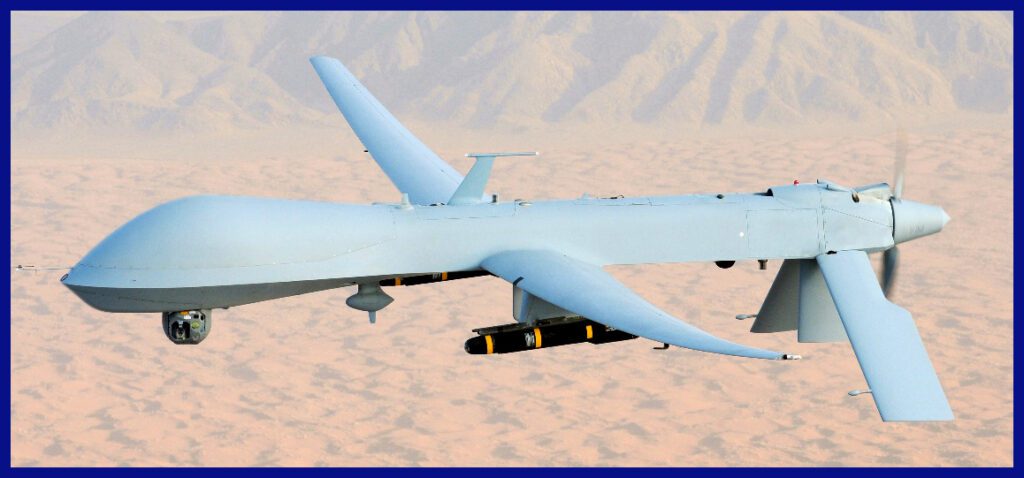
The Development of the General Atomics MQ-1 Predator UAV
In the early 1980s, the Pentagon and the Central Intelligence Agency (CIA) started testing autonomous reconnaissance aircraft ( drones ). The CIA preferred discrete, lightweight drones that were modest in size, in contrast to the United States Air Force ( USAF ).
In the early 1990s, the Central Intelligence Agency (CIA) expressed interest in the “Gnat,” an unmanned aerial vehicle (UAV) developed by Leading Systems, Inc., which was owned by Abraham Karem. Mr. Karem, a former chief designer for the Israeli Air Force who migrated to the United States from Israel in the late 1970s, is widely recognized as a pioneer in UAV technology. His innovative work laid the foundation for the development of the Predator drone, marking a significant milestone in the evolution of UAV technology.
Which is developed & built by General Atomics Aeronautical Systems Inc. ( GA-ASI ) the MQ-1 Predator, a medium-altitude long-range ( MALE ) UAV has been in use since 1995 and has seen combat in theatres as varied as Afghanistan, Bosnia, and Kosovo, Iraq, Yemen, Libya, Syria and Somalia. The system consists of a fixed-wing airframe and a Rotex four-cylinder engine powering a propeller at the rear of the airframe. The Rotax-powered aircraft can travel up to 400 nautical miles ( 740 kilometres ) to a target, hover there for 14 hours, and then return to its base.

It can be configured with a satellite data link and typical equipment includes a stabilized gimble sensor with two colour video cameras and forward-looking infrared FLIR ) camera, and a synthetic aperture radar ( SAR ). The aircraft also has a multi-spectral targeting system linked to two onboard AGM-114 Hellfire missiles.
Normally the predator is deployed as a system, as opposed to a single aircraft. This system comprises four aircraft, a ground control station, a Predator Primary Satellite Link and about 55 personnel to both fly the aircraft and operate its various onboard systems. Each aircraft has one remote pilot and two sensor operators.
General Atomics Aeronautical Systems, Inc. (GA-ASI) has delivered over 320 MQ-1 Predators, contributing significantly to global security efforts worldwide. The production of this product line continued until 2011. These MQ-1 Predators have conducted approximately 141,000 missions and accumulated over 2 million total flight hours. Remarkably, over 90 % of these flight hours were dedicated to supporting combat missions.
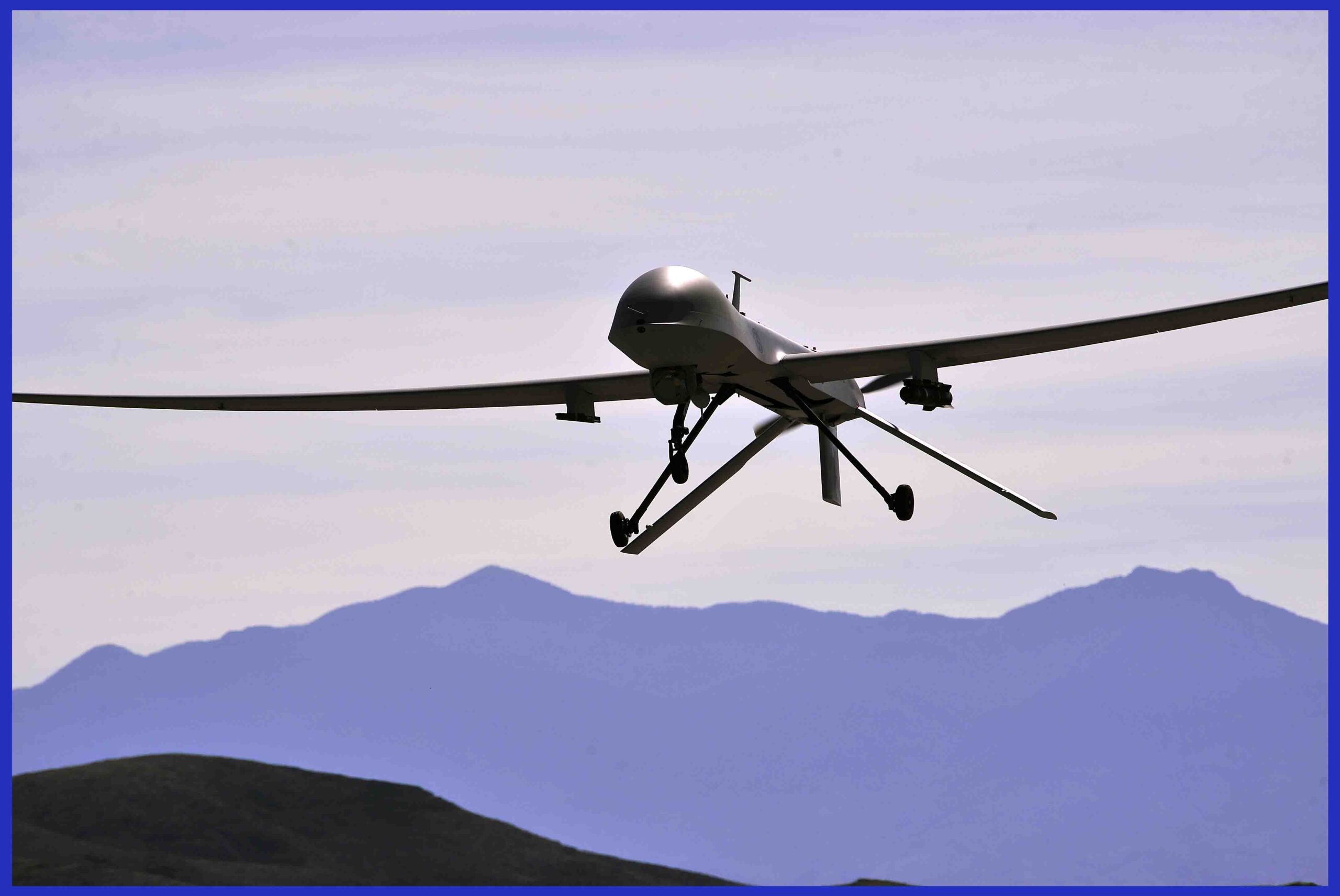
MQ-1 Predator Systems for Command and Detection
The Predator air vehicle and its sensors are controlled from the ground control station (GCS) using either a C-band line-of-sight data link or a K-band satellite data link for beyond-line-of-sight operations. The GCS crew typically comprises a pilot and two sensor operators when conducting flight operations. The aircraft’s equipment includes the Multi-spectral Targeting System, a nose camera, a variable aperture day-TV camera, and a variable aperture thermographic camera for low light and night operations. In earlier versions, Predators were equipped with a synthetic aperture radar capable of penetrating clouds, haze, and smoke.
In subsequent versions of Predators, a laser designator has been incorporated, enabling the pilot to pinpoint targets for other aircraft and offer laser guidance for manned aircraft. This laser system also functions as the designator for the AGM-114 Hellfire missile carried onboard the MQ-1 itself.
Features/Benefits MQ-1 Predator
- Multi-mission
- Triple-redundant flight control system
- Redundant flight control surfaces
- Auto takeoff and landing system
- Remotely piloted or fully autonomous
- Beyond Line-of-Sight (BLOS) data link
- High Definition (HD) camera systems
- Lynx Multi-mode Radar
- Claw sensor payload control

The Retirement MQ-1 Predator
In a ceremony at the flight operations facility of General Atomics, the U.S. Air Force received its final MQ-1 Predator on March 3, 2011. The MQ-1 series has logged over 1,000,000 flight hours since its maiden flight in July 1994 and has consistently kept a fleet fully mission capability rate above 90%.
The MQ-1 Predator was formally taken out of service by the U.S. Air Force on March 9, 2018. The first operational deployment of the aircraft occurred in 1995. Until the year 2011, a total of 268 Predators were delivered to the U.S. Air Force alone.
Although the Predator was gradually phased out by the Air Force in favour of the heavier and more powerful MQ-9 Reaper, The newer version of Predator is still in use with the U.S. Army as an MQ-1C Gray Eagle variant and in numerous other countries.
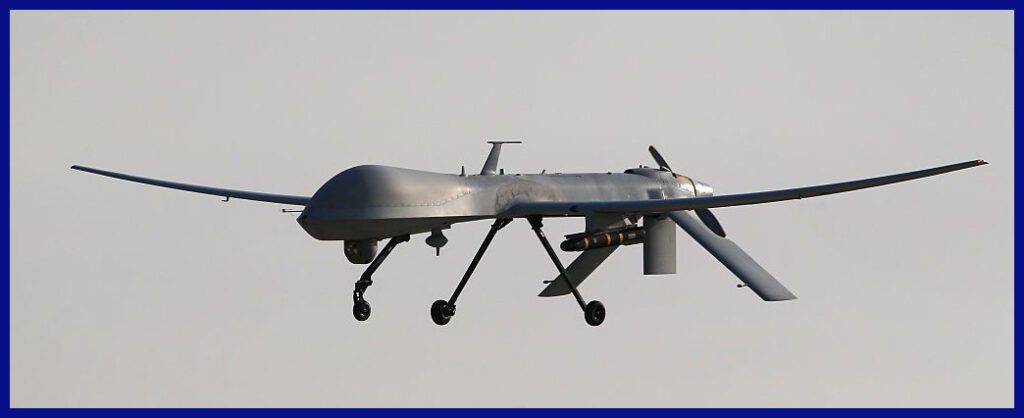
MQ-1 Predator Technical Specifications
- Crew: 3 on the ground (remote pilot, sensor operator, and intelligence analyst), with in-theatre ground handling crew
- Length: 27 ft 0 in ( 8.23 m )
- Height: 6 ft 11 in ( 2.1 m )
- Wingspan: 48 ft 7 in ( 14.8 m )
- Empty Weight: 513 kg ( 1,130 lb )
- Max takeoff weight: 1,020 kg ( 2,249 lb )
- Powerplant: 1 × Rotax 914F 4-cylinder air-cooled turbocharged horizontally-opposed piston engine
- Fuel capacity: 387 kg ( 851 lb )
- Maximum Speed: 217 km/h ( 135 mph )
- Mission Radius: 1,250 km ( 777 mi )
- Endurance: 24 hours ( 18 hours fully loaded with arms )
- Service ceiling: 25,000 ft ( 7,600 m )
- Hardpoints: 2 ( was designed to carry two Hellfire ASM )

Moreover, do not miss the golden opportunity to own exquisite and awe-inspiring scale models of the General Atomics MQ-1 Predator, MQ-9 Reaper, and X-47B Pegasus UCAV, which are conveniently available exclusively on AirModels. These remarkable and iconic military UAVs boast impeccable track records and are now available for purchase with worldwide delivery. Click here now to secure your piece before the limited stock is depleted.
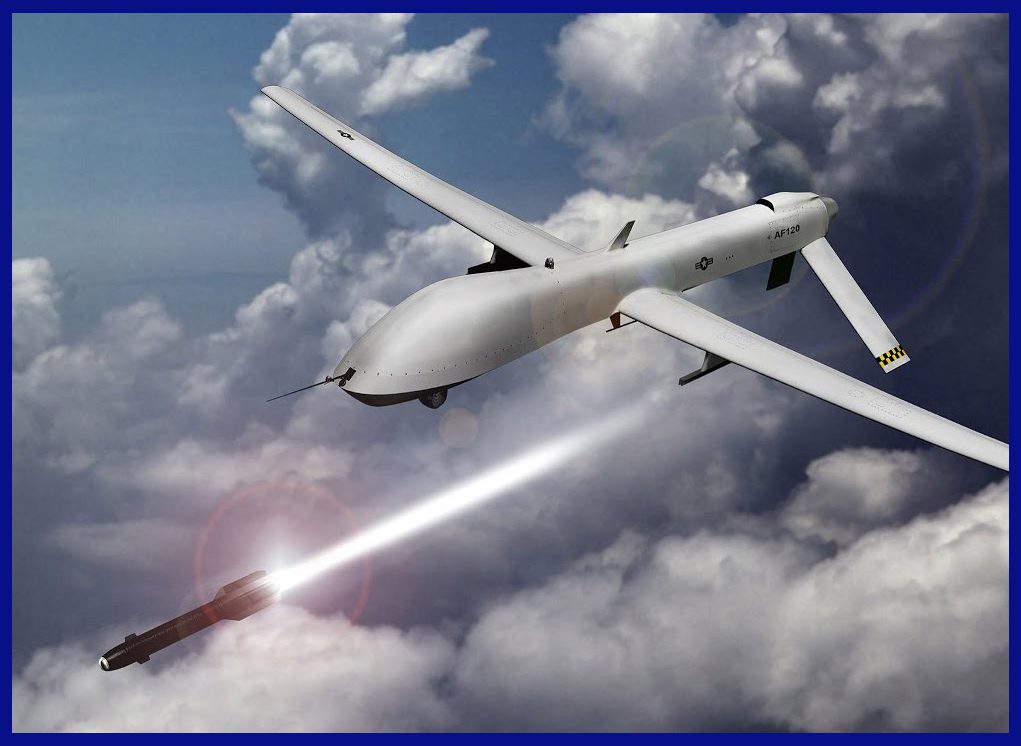
In conclusion, the General Atomics MQ-1 Predator serves as a testament to the transformative power of innovation in modern military technology. Its evolution, from initial prototypes to operational deployment, represents a significant milestone in the field of unmanned aerial vehicles. The Predator’s capacity for continuous surveillance, real-time intelligence gathering, and precision strikes have reshaped the landscape of contemporary warfare.
Although the MQ-1 Predator has been retired from active service, its enduring legacy persists. It not only paved the way for more advanced UAVs such as the MQ-9 Reaper but also fundamentally transformed the conduct of military operations, highlighting the indispensable role of unmanned systems in modern conflicts.
The journey of the MQ-1 Predator symbolizes an extraordinary blend of visionary thinking, engineering prowess, and adaptability, underscoring that innovation transcends boundaries and redefines the future of military capabilities. Its influence on military aviation and surveillance remains an influential chapter in the ongoing evolution of modern warfare.
Important Announcement for Our Valued Readers!
After an article is published, it is possible that updates or changes may have occurred beyond the time of publication. Therefore, it is important to be aware that certain information in the article might be outdated. To ensure the most accurate analysis, it is highly recommended to verify the content with the latest sources available.
However, we are dedicated to delivering outstanding articles on military products and global updates. Maintaining quality and smooth operation requires resources. Your support sustains our efforts in providing insightful content. By purchasing high-quality products through our affiliated links, you help us keep our platform alive and acquire top-notch items. Your unwavering support is invaluable and inspires us to strive further.
We welcome your suggestions and requests for more information, as we value feedback from our readers. If there’s specific defence material or equipment not covered on our site, please share your request in the comments. We’ll strive to research and provide the required information. We sincerely thank you for your unwavering interest in our website, and we eagerly anticipate hearing from you! Enjoy your reading experience!
